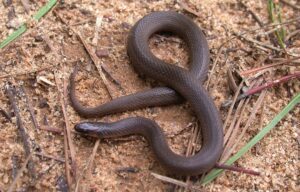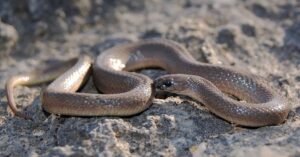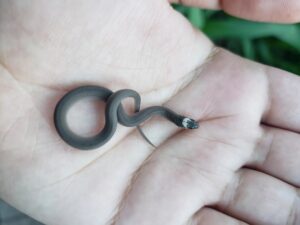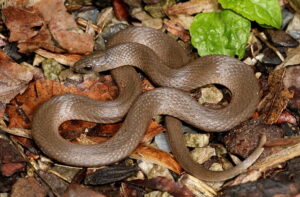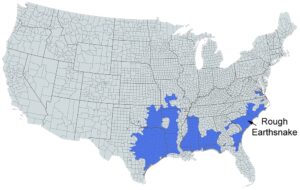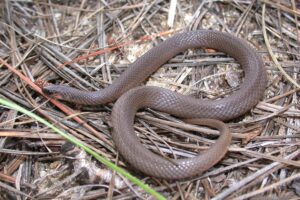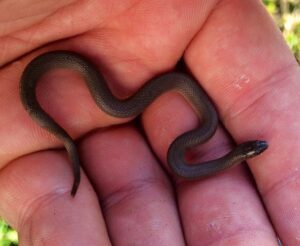The rough earth snake is a fossorial natricine colubrid endemic to the southeastern United States. It is a small, secretive, harmless, and fairly slender snake. Other common names of the snake are brown snake, brown ground snake, ground snake, little striped snake, little brown snake, small brown viper, southern ground snake, small-eyed brown snake, worm snake, and striated viper.
Scientific Classifications
- Suborder:Serpentes
- Family:Colubridae
- Genus:Haldea
- Species:H. striatula
Conservation Status
Description
Size
The total length of an adult, including its tail, is 7-10 in (18-25 cm). The females are slightly longer and heavier than the males with shorter tails.
Color and Appearance
Dorsally, the snake is gray, brown, or reddish with essentially no patterns. The tan to whitish belly is not sharply distinguished from the back in color. It has weakly keeled dorsal scales, round pupils, and usually divided anal plate. The small head is a little wider than the neck.
The babies often have a light band on their necks that normally disappear when they mature.
Are They Dangerous to Humans
The rough earth snake is not venomous, not aggressive towards humans, and is harmless if encountered. Despite having teeth, it doesn’t bite. When harassed, it tries to escape or becomes motionless. It tries to make itself less palatable to potential predators by excreting a foul-smelling musk and defecating as a defense mechanism. If needed, it can be safely picked up by hand and relocated.
Rough Earth Snakes at a Glance
Distribution
It ranges from southern Virginia to northern Florida, west to southern Texas along the Gulf Coast, and north into southeastern Kansas and south-central Missouri. It also occurs in the northern parts of Oklahoma.
Habitat
The rough earth snake hides in leaf litter, compost piles, gardens, below logs, or ornamental stones. It can be found in various forested habitats with abundant ground cover and urban areas. Very high densities of its population can be reached in parks, urban gardens, and vacant lots.
Lifespan
The colubrid lives for 5-7 years.
Predators
It is eaten by predatory birds, mammals, and other snakes.
Diet
Its diet includes invertebrates. It almost exclusively feeds on earthworms though snails, slugs, slow bugs, insect larvae, and eggs are also eaten. It swallows its prey whole without subduing it. The snake’s pointed snout helps it to burrow in moist soil to find its prey.
Reproduction
Viviparous (gives birth to live young)
3-8 live young are born in a litter in mid-summer. The juveniles are 4 in (10 cm) in total length and somewhat resemble the ring-necked snake with their light-colored neck band. But they lack a brightly colored belly and are drabber in appearance.
Similar Species
The smooth earth snake, Virginia valeriae, has smooth dorsal scales, while the rough earth snake has keeled scales.
Source
herpsofnc.org, a-z-animals.com, reddit.com, staticflickr.com, virginiaherpetologicalsociety.com, projectnoah.org

